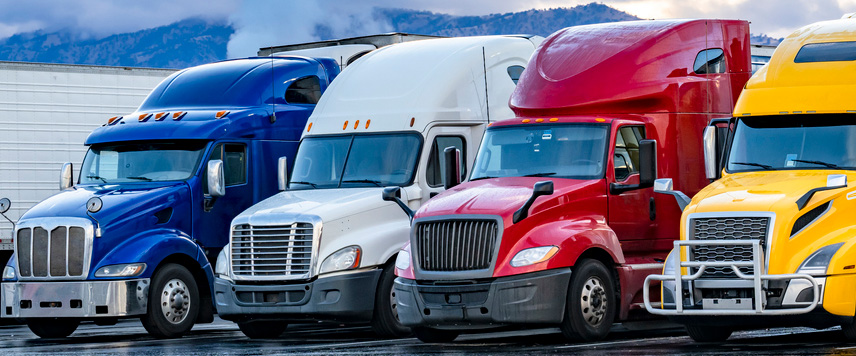With 2024 fast approaching, it is important to learn everything we can from the past trends in order to continue to be integral to the ever-evolving future of the trucking industry. In late July, the American Trucking Association released their annual “American Trucking Trends” report for 2023, and it is crammed with interesting facts and figures that can help guide trucking companies forward next year, 2024. Today, the Lionzone blog is taking a dive into this report and learning about how the trucking industry is rebounding from the collective economic trauma of the Covid-19 pandemic. By looking at this report now and seeing how much is being moved and how much money is being made from supplying goods to American consumers, as well as who is driving the trucks filled with those goods, trucking companies can make more informed decisions about recruitment and retention in 2024.
Industry Data Collected from 2022
The American Trucking Trends 2023 report is put together using data collected from the American Trucking Association. Covering 2022, trucking industry professionals can see everything from the gross revenues to how many trucks were on the road.
- 11.46 billion tons of freight were moved in 2022. That is up from the 10.93 billion tons transported across America in 2021.
- The trucking industry collected over 80% of the U.S.’s freight bill, equaling $940.8 billion.
- Over 8.4 million people are employed in industry-related jobs, including 3.54 million professional truck drivers. The number of trucking industry professionals is up 405,000 from 2021.
- Truck Driver Demographics:
- The number of women who drive trucks professionally went up for the seventh straight year. They now make up 8.1% of U.S. truck drivers.
- 18.3% of truck drivers identify as African American, while 4% identify as Asian American, and 23.3% of drivers consider themselves to be Hispanic or Latino truckers.
- The trucking industry remains dominated by small businesses. Out of all of the trucking fleets, 95.8% operate 10 trucks or less, while 99.7% operate 100 trucks or less.
What Does This Mean for Your Business?
With 2020 and 2021 being years of financial fluctuations due to the Covid-19 pandemic, 2022 became the year of recovery. Despite the many obstacles faced coming out of quarantines and lockdowns, the trucking industry that had stayed regularly busy with the forced rise of e-commerce, bolstered that growth with the expansion of supply chains and logistics networks. This led to revenue increases last year, as well as an uptick in truck drivers and warehouse workers to cope with the higher demands.
The revenue generated by e-commerce during the pandemic has not gone away; it has only been tempered by the renewed desire for buyers to purchase their goods outside of their home. This means that, for now, the needs of American producers and consumers are still provided for by the U.S. trucking industry. Some businesses are concerned that the future of the economy will not include trucking goods across the country. Even as many companies struggle to grapple with a way to get a handle on climate change, shipping freight will continue to be necessary for transporting integral goods, like food and medical supplies. With trucks moving nearly 73% of all freight in the U.S., there is going to be a need for trucks and truck drivers for the foreseeable future. Taking this information and preparing your company’s recruitment and retention strategies for 2024 can give you and your drivers the advantages needed to be successful in the coming year!
__________________________________________________________________________
Meaghan Goldberg covers recruitment and digital marketing for Lionzone. A Patterson, GA native, after graduating from both Valdosta State University and Middle Tennessee State University, Meaghan joined Lionzone in 2018 as a digital recruitment strategist before becoming the social media manager.
Resources:
https://www.trucking.org/economics-and-industry-data
https://labworksusa.com/trucking-revenue-all-grew-in-2022-despite-challenges




